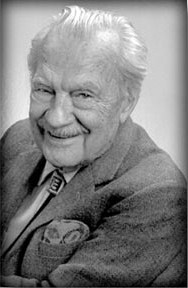-
(b.) -1915 June 11(d.)1999 October 17
Bio/Description
A Greek American physicist, he was born in Chicago and was a graduate of the University of Chicago having received his B.Sc. (1937) and Ph.D. (1941) degrees in physics. Shortly afterwards, Robert Oppenheimer recruited him from Chicago, where he was at the time collaborating with Enrico Fermi and Edward Teller on the first nuclear reactors, to the Los Alamos National Laboratory. He joined the Manhattan Project in April 1943 in Los Alamos, as a member of the original staff of fifty scientists. After World War II he returned to the faculty of the University of Chicago as an Assistant Professor. He came back to Los Alamos in 1948 to lead the group in the Theoretical (T) Division that designed and built the MANIAC I computer in 1952 and MANIAC II in 1957. (He chose the name MANIAC in the hope of stopping the rash of such acronyms for machine names, but may have, instead, only further stimulated such use. From 1957 to 1965 he was Professor of Physics at the University of Chicago and was the founding Director of its Institute for Computer Research. In 1965 he returned to Los Alamos where he was made a Laboratory Senior Fellow in 1980. In the 1950s, he led a group of researchers who developed the Monte Carlo method. Generally speaking, the Monte Carlo method is a statistical approach to solve deterministic many-body problems. In 1953 he co-authored the first paper on a technique that was central to the method now known as simulated annealing. This landmark paper showed the first numerical simulations of a liquid. Monte Carlo methods are a class of computational algorithms that rely on repeated random sampling to compute their results. Today, the Monte Carlo method is used for diverse applications, such as simulating traffic flow on highways, forecasting financial fluctuations in the stock market, and modeling radiation transport in the earth's atmosphere. He was a member of the American Academy of Arts and Sciences, the Society for Industrial and Applied Mathematics and the American Mathematical Society. In 1987 he became the first Los Alamos employee honored with the title "emeritus" by the University of California. He was also awarded the Pioneer Medal by the Institute of Electrical and Electronics Engineers, and was a fellow of the American Physical Society. The Nicholas Metropolis Award for Outstanding Doctoral Thesis Work in Computational Physics is awarded annually by the American Physical Society.
-
Date of Birth:
1915 June 11 -
Date of Death:
1999 October 17 -
Gender:
Male -
Noted For:
Led the group in the Theoretical (T) Division that designed and built the MANIAC I computer in 1952 and MANIAC II in 1957 -
Category of Achievement:
-
More Info:


